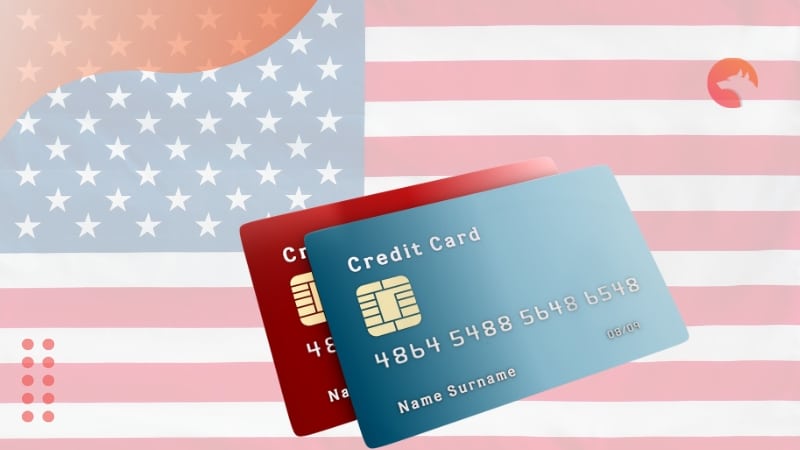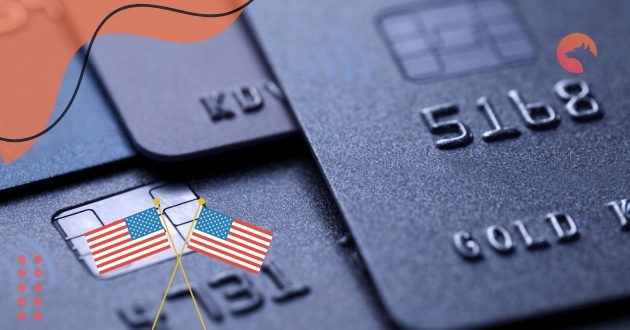Credit cards for fair credit are often underestimated, yet they represent one of the most important financial tools for individuals looking to strengthen their credit standing.
When your score is not high enough to qualify for premium rewards cards but not low enough to be restricted only to secured options, these specialized products become the bridge between limitation and opportunity.
They are designed for consumers who fall into the “middle ground” of creditworthiness, offering a unique balance of accessibility and growth potential.
At first glance, you might think that these cards offer very little beyond basic spending power. However, that assumption couldn’t be further from the truth. In reality, credit cards for fair credit can serve as a strategic stepping stone.
They provide access to manageable credit lines, introduce simple yet valuable rewards programs, and, most importantly, report your positive financial behavior to major credit bureaus. This combination creates the perfect environment for borrowers eager to climb from fair to good or even excellent credit.
Furthermore, these cards can act as a safeguard against financial stagnation. Instead of being stuck with costly subprime options or continuously facing rejection for high-tier cards, applicants with fair credit scores gain an actionable path forward.
By choosing the right product and applying disciplined habits, you not only prove your reliability to lenders but also unlock the possibility of upgrading to cards with higher limits, richer perks, and better interest rates.
What Does Fair Credit Mean?
To begin, it’s important to define the term. Credit scoring models like FICO and VantageScore generally classify scores as follows:
- Poor Credit: 300–579
- Fair Credit: 580–669
- Good Credit: 670–739
- Very Good Credit: 740–799
- Excellent Credit: 800–850
Being in the fair range indicates that you have some credit history, but it might show late payments, high utilization, or limited experience managing debt. Although this is not a disastrous position, it still means lenders see you as a moderate risk. Because of that, specialized credit cards for fair credit are offered to bridge the gap between entry-level products and premium options.
Why Choose Credit Cards for Fair Credit?
Credit cards for fair credit offer a unique opportunity for individuals whose credit scores fall in the middle range, typically between 580 and 669. These cards are designed to help those who may not qualify for premium cards due to their credit history but still want to access credit products with manageable terms.
Applying for credit cards for fair credit increases your chances of approval, as they are specifically tailored for those with moderate credit scores. In contrast, applying for higher-tier cards could result in rejections or hard inquiries, which can further hurt your score.
First and foremost, credit cards for fair credit help individuals build or rebuild their credit. With regular, on-time payments, users can establish a positive credit history, gradually increasing their credit score.
This makes these cards not just tools for spending, but stepping stones toward better financial options. Over time, this responsible use can open the door to more favorable cards with higher limits, better rewards, and lower interest rates.
In addition, many of these cards offer rewards programs, such as cashback on everyday purchases, which provides additional value. Although the rewards may not be as generous as those of cards for higher credit tiers, they still give users a way to benefit from their regular spending.
For individuals just starting to build their credit, the ability to earn rewards while improving their financial profile is a major advantage. Finally, students looking to build credit may find credit cards for fair credit particularly useful.
In addition to these cards, students may also want to explore the Best Personal Loans for Students as a way to manage educational expenses while building a credit profile. These credit cards serve as an accessible tool to help students gain financial independence and pave the way for future credit opportunities.
Common Features of Credit Cards for Fair Credit
Although each card is different, many products in this category share similar traits. Understanding them helps set realistic expectations.

- Moderate Interest Rates: Compared with cards for excellent credit, you may face higher APRs. However, rates are usually lower than those for secured or subprime cards.
- Basic Rewards Programs: Some credit cards for fair credit do offer cashback or points, though the structure might be simpler. For example, a flat 1.5% cashback on all purchases or bonus rewards for specific categories like gas and groceries.
- Credit Limit Flexibility: Initial credit limits may be modest, often ranging between $300 and $1,500. Nevertheless, many issuers conduct periodic reviews and grant credit line increases after demonstrating responsible use.
- Fewer Premium Perks: Don’t expect luxury travel benefits, airport lounge access, or concierge services. The focus is on accessibility rather than prestige.
Secured vs. Unsecured Options
When searching for credit cards for fair credit, you will encounter two main types: secured and unsecured.
- Secured Credit Cards: These require a refundable deposit, which typically acts as your credit limit. For instance, a $500 deposit results in a $500 limit. They are excellent for rebuilding credit because approval is almost guaranteed.
- Unsecured Credit Cards: These don’t require a deposit and function like traditional cards. They can be harder to qualify for with fair credit, but they save you from tying up cash. Furthermore, they often come with introductory rewards, making them more attractive for those confident in their financial discipline.
Pros and Cons of Credit Cards for Fair Credit
Like any financial tool, these cards come with advantages and drawbacks.
Benefits
- Accessibility: Higher approval odds for applicants with fair credit scores.
- Credit Building: Regular reporting to major bureaus helps improve your credit profile.
- Rewards Potential: Some cards offer cashback or points, even for those not yet in the good credit tier.
- Path to Upgrades: With responsible management, you can qualify for better cards.
Drawbacks
- Higher Fees: Some cards carry annual fees or balance transfer fees.
- Elevated Interest Rates: APRs are less favorable compared to cards for good or excellent credit.
- Lower Limits: Spending power may be restricted initially.
By weighing these pros and cons, you can determine whether a specific card aligns with your financial goals.
How to Maximize Credit Cards for Fair Credit
Merely getting approved is not enough; the real value lies in how you manage the account.
- Always Pay on Time: Payment history is the single most significant factor in credit scoring. Even one missed payment can damage your score.
- Keep Utilization Low: Try to use less than 30% of your available credit. If your limit is $1,000, aim to keep your balance under $300.
- Monitor Your Statements: Fraudulent charges or billing errors can set back your progress. Regular reviews help you stay in control.
- Request Limit Increases: After demonstrating responsible use for six to twelve months, ask your issuer for a higher limit. This reduces your utilization ratio and boosts your score.
- Avoid Multiple Applications: Every application results in a hard inquiry. Focus on one card at a time to minimize the impact on your credit.
Real-World Scenarios
To make this discussion more practical, let’s consider a few examples.
- Scenario 1: The Recent Graduate: A graduate with student loans but no major delinquencies falls into the fair credit range. By choosing a no-annual-fee credit card for fair credit, she can start earning small rewards while proving her reliability to lenders.
- Scenario 2: The Rebuilder: After facing financial hardship, a consumer’s score drops into the fair range. Opting for a secured card, he puts down a $500 deposit. Over the next year, timely payments and low utilization allow him to move to an unsecured rewards card.
- Scenario 3: The Budget-Conscious Shopper: Someone who spends heavily on groceries and gas selects a fair credit card with bonus rewards in those categories.
These scenarios illustrate how different individuals can leverage credit cards for fair credit according to their unique financial circumstances.
Common Mistakes to Avoid
Although these cards designed to help, misuse can cause setbacks. Some frequent mistakes include:
- Carrying high balances that accumulate interest.
- Ignoring annual fees and hidden charges.
- Missing payments and damaging credit further.
- Closing older accounts, which shortens credit history.
By avoiding these pitfalls, you ensure that the card serves as a stepping stone rather than a stumbling block.
The Future of Credit Cards for Fair Credit
The financial industry continues to evolve. Digital banking, fintech startups, and AI-driven underwriting models are reshaping access to credit. In the future, credit cards for fair credit may include more personalized features, such as dynamic credit limits that adjust in real time or AI-powered budgeting tools integrated directly into the card’s mobile app.
Therefore, keeping an eye on market trends not only helps you select the best current product but also prepares you for innovations that could make borrowing more flexible and transparent.
Conclusion
Credit cards for fair credit are crucial financial tools for individuals with credit scores ranging from 580 to 669. These cards provide a pathway to improving creditworthiness, especially for those who are unable to qualify for premium credit cards. Unlike high-risk credit options, credit cards for fair credit offer a balance of accessibility and opportunity to rebuild or strengthen your credit profile, allowing users to increase their credit scores over time with responsible use.
The primary advantage of credit cards for fair credit is the opportunity to build a positive credit history. By making on-time payments and keeping credit utilization low, cardholders can steadily raise their credit scores, eventually qualifying for higher-tier cards with better rewards, lower interest rates, and larger credit limits. This process is an essential step for individuals who want to move from fair credit to good or excellent credit.
These cards often come with basic rewards programs, such as cashback or points on everyday purchases. While the rewards are not as generous as those offered by cards for individuals with good or excellent credit, they still provide an extra incentive for users to spend responsibly and earn benefits. This makes credit cards for fair credit a practical tool for individuals who wish to maximize their spending while improving their credit standing.
In conclusion, credit cards for fair credit serve as an essential bridge for those looking to improve their financial situation. They offer a manageable way to rebuild credit and gain access to more favorable financial products.
For additional information on credit cards and managing your financial health, visit the Federal Trade Commission’s official website, where you can find trusted resources and guidance on making informed financial decisions.



